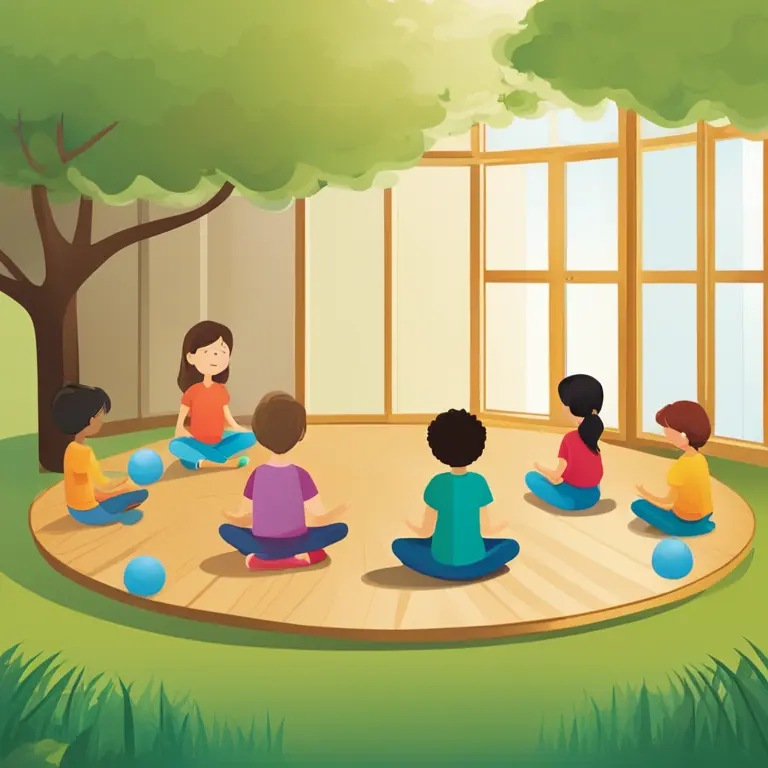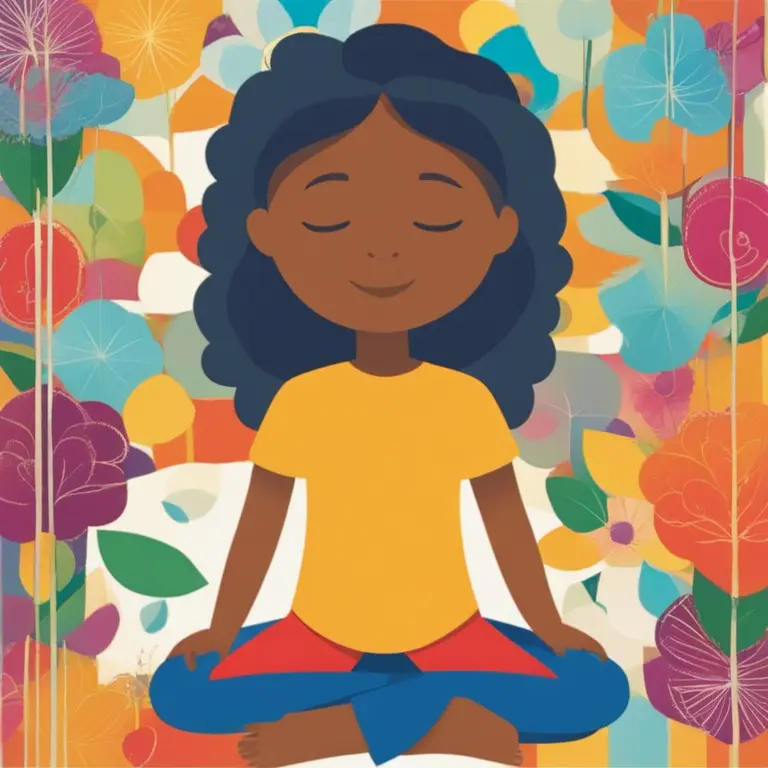
Mindful Mornings: Meditation Guide for 3rd Graders
Discover the benefits of mindfulness meditation structured for third graders, promoting tranquility and focus in young learners.
article by Hina Kurosawa
The Need for Mindfulness in Childhood
Meditation and mindfulness have become indispensable tools for fostering emotional well-being and concentration in today's fast-paced world. Third graders, balancing the energy of youth with the demands of growing academic pressure, can benefit immensely from mindfulness meditation. It equips them with the skills to manage stress, enhance focus, and navigate their emotional landscape. Introducing such practices early sets a foundation for a balanced and resilient life. Comparable to healthy eating or physical exercise, integrating meditation into a child's routine can contribute to holistic development.

Starting with the Basics: What is Mindfulness?
Before diving into mindfulness meditation with young children, it's crucial to define the term in an accessible way. Mindfulness is the simple act of paying full attention to what's happening in the present moment. It means noticing what you're doing, what you're thinking, and what you're feeling, all without judgment. For third graders, this can be likened to the focus they might bring to watching a ladybug crawl across a leaf or listening to a story. It’s about being fully immersed in the now.

Designing Mindfulness Meditation for 8-Year-Olds
Meditation for children, especially for 8-year-olds, should incorporate fun, imagination, and movement. A mindfulness session can start with a brief, attentive walk or a simple listening exercise. Use storytelling to guide them through visualization exercises, where they can imagine their breath as waves on a beach or leaves blowing in the wind. This allows them to connect with the experience and remain engaged. Techniques should be adapted to be age-appropriate, ensuring that they are simple, brief, and interspersed with dialogue to keep the young meditators connected to the activity.

The Right Environment for Meditation
Creating a calming ambiance is crucial when introducing meditation to third graders. A comfortable and quiet space, without the regular distractions of technology or interruptions, is key. The room should be arranged in a circle or semi-circle, allowing the children to see and take cues from both the instructor and their peers. Soft background music or the sounds of nature can help enhance their focus. Regular scheduled sessions, integrated within their daily or weekly school routine, can provide a structured approach to the practice.

Benefits Tailored to Third Graders
At this age, the primary benefits of meditation are improved attention span, emotional regulation, and empathy towards others. Research suggests that children who engage in mindfulness exhibit fewer signs of stress and anxiety, display better social skills, and perform higher academically. Given the unique challenges facing students in the 2020s, including increased screen time and reduced outdoor activity, these benefits are more relevant than ever. They also align with educational goals that aim to support the development of the whole child.
Incorporating Family and Educators
Support from adults at home and at school is vital in reinforcing the principles of mindfulness. By training educators and providing resources to families, children can practice mindfulness in a consistent and supportive manner. This collaborative approach ensures that children can apply mindfulness strategies both in the classroom and beyond. Workshops and informational sessions for parents can help create a shared understanding and commitment to mindfulness practices.
Sustainability of Practice
To sustain a mindfulness meditation practice beyond initial sessions, make meditation a game or challenge that children can look forward to. They can count breaths, use mindfulness apps designed for children, or keep a journal of their mindfulness journey. Teachers can incorporate short mindfulness exercises before tests or stressful activities, and parents can encourage mindfulness practices before homework or at bedtime. Celebrating milestones and the positive changes in their behavior can keep them motivated and committed to the practice.
Published: 1/18/2024
Modified: 1/18/2024
More predictions
Come back here soon to learn more about yourself and your future


Easing Anxiety Through Mindful Meditation
Discover how mindful meditation can be a serene gateway to relieving anxiety, fostering a peaceful mind, and promoting overall well-being.


Exploring Meditation in Psychological Practice
Delve into the psychological perspective on meditation, its benefits, and applications in modern mental health practices.


The Origins of Meditation: Tracing Its Historical Roots
Discover the historical origins of meditation, its transformation through time, and its profound impact on various cultures around the world in this insightful article.